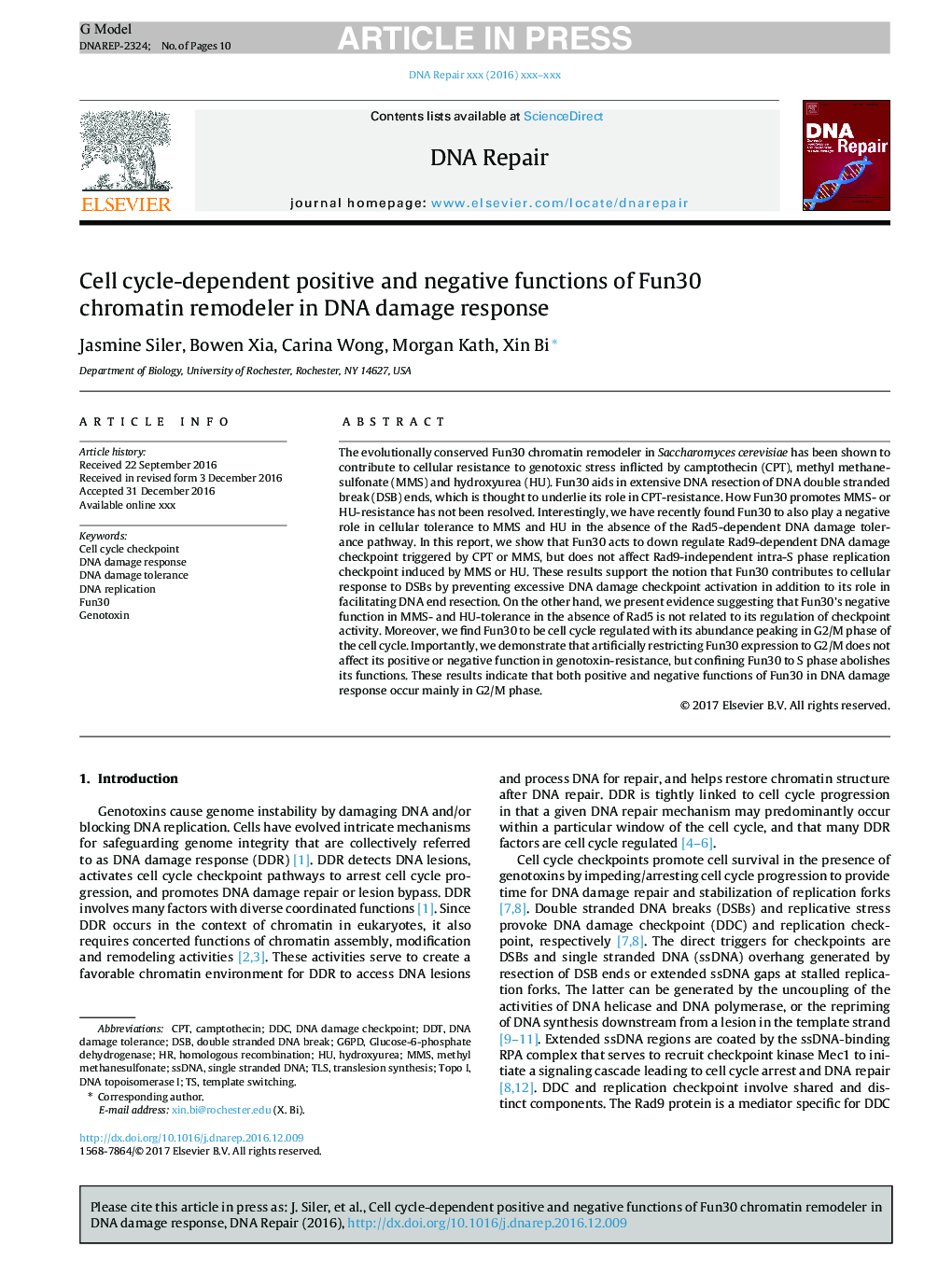| Article ID | Journal | Published Year | Pages | File Type |
|---|---|---|---|---|
| 5511015 | DNA Repair | 2017 | 10 Pages |
Abstract
The evolutionally conserved Fun30 chromatin remodeler in Saccharomyces cerevisiae has been shown to contribute to cellular resistance to genotoxic stress inflicted by camptothecin (CPT), methyl methanesulfonate (MMS) and hydroxyurea (HU). Fun30 aids in extensive DNA resection of DNA double stranded break (DSB) ends, which is thought to underlie its role in CPT-resistance. How Fun30 promotes MMS- or HU-resistance has not been resolved. Interestingly, we have recently found Fun30 to also play a negative role in cellular tolerance to MMS and HU in the absence of the Rad5-dependent DNA damage tolerance pathway. In this report, we show that Fun30 acts to down regulate Rad9-dependent DNA damage checkpoint triggered by CPT or MMS, but does not affect Rad9-independent intra-S phase replication checkpoint induced by MMS or HU. These results support the notion that Fun30 contributes to cellular response to DSBs by preventing excessive DNA damage checkpoint activation in addition to its role in facilitating DNA end resection. On the other hand, we present evidence suggesting that Fun30's negative function in MMS- and HU-tolerance in the absence of Rad5 is not related to its regulation of checkpoint activity. Moreover, we find Fun30 to be cell cycle regulated with its abundance peaking in G2/M phase of the cell cycle. Importantly, we demonstrate that artificially restricting Fun30 expression to G2/M does not affect its positive or negative function in genotoxin-resistance, but confining Fun30 to S phase abolishes its functions. These results indicate that both positive and negative functions of Fun30 in DNA damage response occur mainly in G2/M phase.
Keywords
CPTDSBTLSG6PDDNA topoisomerase IMMSssDNAddCsingle stranded DNACell cycle checkpointDNA damage toleranceTemplate switchingTopo IDDTtranslesion synthesismethyl methanesulfonateDNA damage checkpointHomologous recombinationDNA replicationHydroxyureaDNA damage responseGenotoxincamptothecinglucose-6-phosphate dehydrogenase
Related Topics
Life Sciences
Biochemistry, Genetics and Molecular Biology
Biochemistry
Authors
Jasmine Siler, Bowen Xia, Carina Wong, Morgan Kath, Xin Bi,
